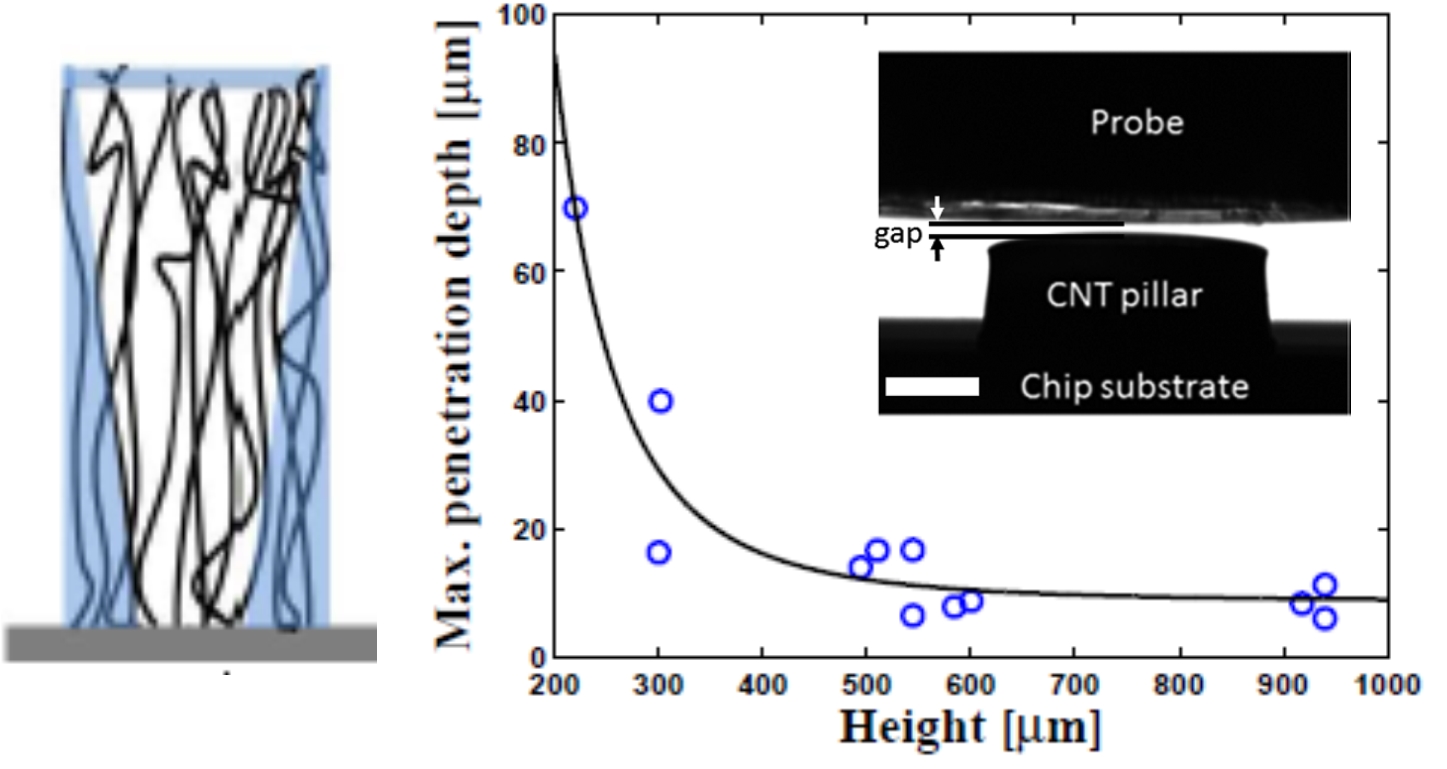
Year
2015Volume
106Issue
5Pages
053106Abstract
Understanding of the electrostatic properties of carbon nanotube (CNT) forests is essential to enable their integration in microelectronic and micromechanical devices. In this study, we sought to understand how the hierarchical geometry and morphology of CNT forests determines their capacitance. First, we find that at small gaps, solid micropillars have greater capacitance, yet at larger gaps the capacitance of the CNT forests is greater. The surface area of the CNT forest accessible to the electrostatic field was extracted by analysis of the measured capacitance, and, by relating the capacitance to the average density of CNTs in the forest, we find that the penetration depth of the electrostatic field is on the order of several microns. Therefore, CNT forests can behave as a miniature Faraday cage. The unique electrostatic properties of CNT forests could therefore enable their use as long-range proximity sensors and as shielding elements for miniature electronic devices.






